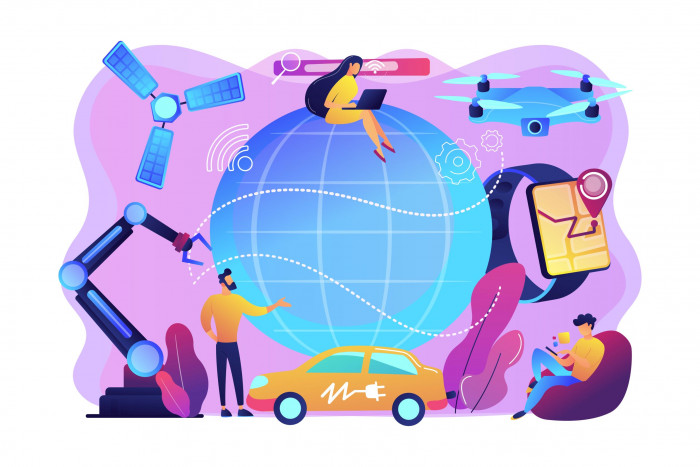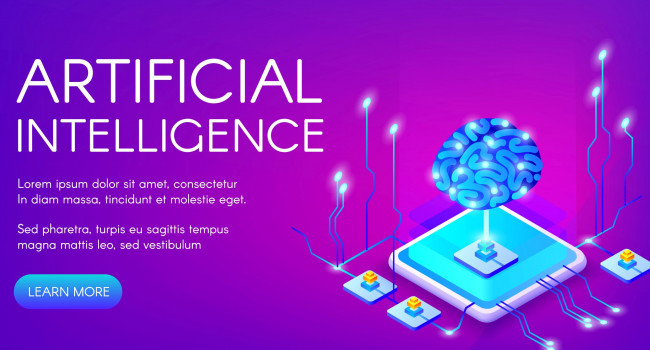The development of autonomous vehicles, is a topic that has gained significant attention over the last few years, and this is mainly due to the advent of Artificial Intelligence (AI) solutions and Machine Learning (ML) technologies. These technologies are at the core of autonomous vehicles and help power the algorithms that allow them to operate without human intervention.
In this article, we will explore how and why developing AI/ML algorithms for autonomous vehicles is essential, and we will use examples to illustrate our points.
Autonomous vehicles rely heavily on artificial intelligence and machine learning algorithms to perceive the environment, make decisions, and control their movements.
What are Autonomous Vehicles?
Autonomous vehicles are those vehicles that can operate without human intervention. These vehicles use sensors, cameras, and other technologies to perceive the environment around them and make decisions based on that information. They are typically classified into five levels, with level 0 being a vehicle requiring complete human control and level 5 being a vehicle operating entirely autonomously without any human input.

Why is Developing AI/ML Algorithms for Autonomous Vehicles Essential?
Developing artificial Intelligence (AI) solutions ML algorithms for autonomous vehicles is essential because these algorithms enable the vehicle to make decisions based on the information it receives from its sensors and cameras. Without these algorithms, the vehicle could not navigate the road safely, avoid obstacles, or make decisions based on changing road conditions.
Furthermore, AI/ML algorithms allow the vehicle to learn and improve over time. As the vehicle gathers more data, it can use this data to refine its algorithms, enhancing its ability to navigate the road safely and efficiently.
How are AI/ML Algorithms Developed for Autonomous Vehicles?
AI/ML algorithms for autonomous vehicles are developed using a combination of techniques, including supervised learning, unsupervised learning, and reinforcement learning. These techniques allow the algorithms to learn from data, identify patterns, and make decisions based on that data.
Supervised learning is a technique where the algorithm is trained on a dataset of labeled examples.
For example, the algorithm may be trained on a dataset of images of stop signs, and the labels would indicate that these images are stop signs. The algorithm can then use this information to identify stop signs in the real world and respond accordingly.
Unsupervised learning is a technique where the algorithm is not given any labeled data. Instead, it must identify patterns and make decisions based solely on the data it receives.
For example, the algorithm may be tasked with identifying obstacles on the road, and it must learn to do this based on the data it receives from the vehicle's sensors.
Reinforcement learning is a technique where the algorithm learns by receiving feedback through rewards or punishments.
For example, the algorithm may be rewarded when it successfully navigates the vehicle through a busy intersection or punished when it fails to do so.
Examples of AI/ML Algorithms Used in Autonomous Vehicles
Several AI/ML algorithms are used in autonomous vehicles, and we will explore some of these below.
1. Computer Vision Algorithms
Computer vision algorithms are used to process the images and videos captured by the vehicle's cameras. These algorithms can identify objects on the road, such as other vehicles, pedestrians, and traffic signs. They can also identify road markings and lane boundaries, allowing the vehicle to navigate the road safely.
2. Sensor Fusion Algorithms
Sensor fusion algorithms are used to combine the data from the vehicle's various sensors, including cameras, lidar, and radar. These algorithms can create a 3D map of the environment around the vehicle, allowing it to navigate the road safely and avoid obstacles.
3. Decision-Making Algorithms
Decision-making algorithms are used to make commitments based on the data received from the vehicle's sensors. These algorithms can determine the best route to take, the speed at which to travel, and when to stop or turn.
Deep Learning: Deep learning algorithms are used to analyze data collected by sensors and cameras, allowing the vehicle to recognize patterns and make predictions about its environment. Deep learning is also used for tasks such as lane detection and obstacle avoidance.
4. Reinforcement Learning
Reinforcement learning algorithms are used to train the vehicle to make decisions based on its environment. This involves rewarding the vehicle when it makes correct decisions and penalizing it when it makes incorrect decisions.
5. Path Planning
Path planning algorithms are used to plan the vehicle's trajectory, taking into account obstacles, traffic, and other factors. This involves finding the optimal path from the vehicle's current location to its destination.
6. Control Systems
Control systems algorithms are used to control the vehicle's movements, such as acceleration, braking, and steering. These algorithms ensure that the vehicle follows its planned trajectory and avoids obstacles.
Sensor Fusion: Sensor fusion algorithms are used to combine data from multiple sensors, such as cameras and lidar, to create a more complete picture of the vehicle's environment. This allows the vehicle to make more informed decisions and navigate safely.
These are just a few examples of the AI/ML algorithms used in autonomous vehicles. As the technology continues to evolve, we can expect to see even more advanced algorithms being developed to improve the safety and performance of autonomous vehicles.
Conclusion
In conclusion, the development of Artificial Intelligence (AI) solutions /ML algorithms is critical for the successful operation of autonomous vehicles. These algorithms enable the vehicle to perceive and navigate the environment safely and efficiently, allowing it to learn and improve over time. Techniques such as supervised teaching, unsupervised teaching, and reinforcement teaching are used to develop these algorithms.
Examples of Artificial Intelligence (AI) solutions /ML algorithms used in autonomous vehicles include computer vision, sensor fusion, and decision-making algorithms. As technology continues to evolve, developing more advanced and sophisticated AI/ML algorithms will be2ws essential for achieving the goal of fully autonomous vehicles.











